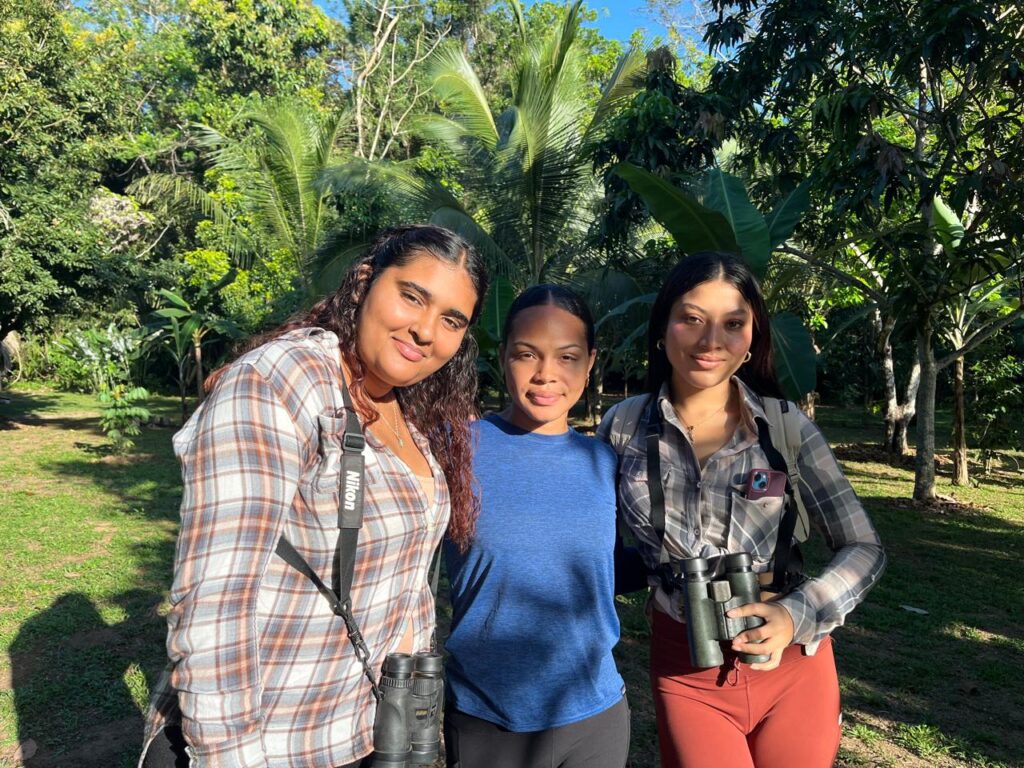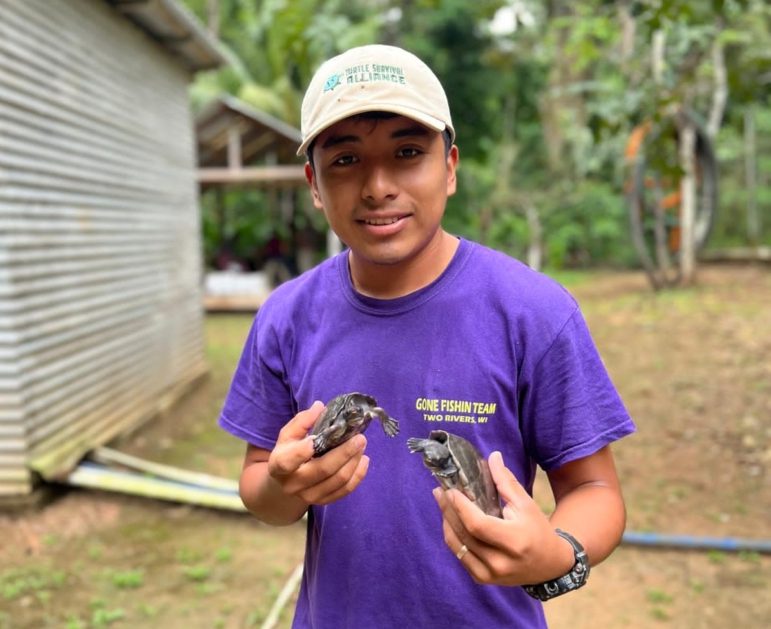Non-profit
My BFREE Experience
by Ashira Rancharan My time at BFREE was nothing short of magical. I’ve always loved nature, but being there felt different; I wasn’t just an observer and instead was a part of all that was happening. I’m someone who has always been a little hesitant about volunteering and afraid that I might not do things…
Read MoreHappy 30th Anniversary to BFREE!
Yesterday, I was filmed for a series of short videos we will be sharing in celebration of the thirty-year anniversary of BFREE. In the middle of the interview, the videographer said, “I think we need to find a quieter place, it’s too noisy here.” I agreed. The sounds of Scarlet macaws, Howler monkeys, and the…
Read MoreAndrew Choco Joins BFREE Full-time as Wildlife Fellow
Hey there! My name is Andrew Choco, and I am from Trio, a community adjacent to BFREE. I was raised in Bella Vista Village, where my connection with nature was somewhat limited. However, after watching documentaries on Animal Planet, my interest in the natural world was sparked. These programs ignited a deep passion for wildlife…
Read MoreThe Bladen Review 2024
The 9th edition of BFREE’s annual magazine is now available in an interactive format online at Issuu! Get the latest news from the field station and learn about exciting research, conservation and education projects taking place in and around the rainforests of Belize. Highlights of the 2024 magazine include: updates on the conservation and outreach programs associated with…
Read MoreBFREE Staff Adventure 2024!
In recognition of a successful field season, fifteen BFREE and Crioco staff members participated in an exciting two-day trip. We chartered a bus, so that we could slowly wind our way along two of Belize’s beautiful highways – the Hummingbird and the Coastal. We took our time as we searched for waterfalls, animals, caves, farms, delicious…
Read MoreOn the horizon – a new multi-purpose building at BFREE
Imagine sitting comfortably in a hammock overlooking the BFREE garden while enjoying a freshly brewed cup of heirloom hot chocolate. The cacao was grown onsite in the cacao agroforestry farms. You are on the second story screened-in porch of a new building at BFREE – the Commons. Situated in the exact location as the old…
Read MoreHicatee Awareness Month Outreach Programs
The start of this October marked the beginning of the 7th annual Hicatee Awareness Month campaign. Kicking off this initiative, Barney Hall and I embarked on a journey to the western part of Belize, focusing our efforts on regions notorious for the harvesting of Hicatee turtles for consumption. Our initial step involved seeking permission from…
Read MoreJaren Serano returns to BFREE as Dermatemys Program Coordinator
By Jaren Serano During my first stint at BFREE, I had the privilege of witnessing the positive impact that organizations like this have on land conservation, wildlife protection, and the conservation efforts among the local communities in Belize. When I joined as BFREE’s first Science and Education Fellow in 2017, I was immediately drawn to…
Read MoreBFREE Welcomes Roxanna Chen as First Advanced Cacao Fellow
We are pleased to introduce BFREE’s newest staff member, Advanced Cacao Fellow, Roxanna Chen. Roxanna will spend the next year and a half investigating and determining best post-harvest processing of the criollo cacao at BFREE as well as characterizing the different varieties. She will also get training from experts and become BFREEs chocolate lab technician.…
Read MoreNaming Opportunity for a New Species of Beaksedge
By Dr. Robert Naczi and Heather Barrett Through his research to document the diversity and conservation status of Belizean sedges, Dr. Robert Naczi of New York Botanical Garden recently discovered a species of beaksedge previously unknown to science. In Belize, the Sedge Family (Cyperaceae) is one of the five largest (most species-rich) plant families. Beaksedges…
Read More



